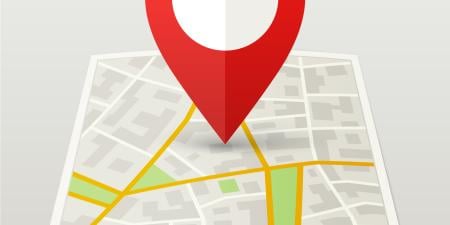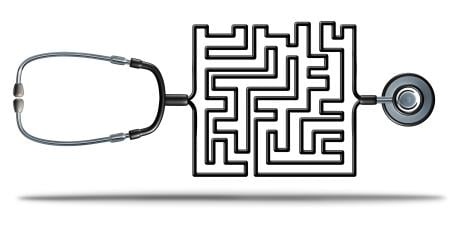Now well into my sixth decade of visiting doctors, my role as an informed and engaged patient continues to evolve. In my first two decades I had little to say directly to my doctors; my mother did all the talking. The information that was exchanged then is all but history and probably of little value or use to the doctors I visit now, with one exception: facts about where I have actually lived for the last six decades. Geomedicine is about this missing information, and I believe it’s important that we learn how to access and use all the relevant information we have available to us. This is why I believe it has value to every physician—and to their health-seeking patients as well.
Geomedicine is a modern reconstruction of a very old, very simple idea. In fact, Hippocrates had this concept in mind more than two millennia ago, instructing physicians on how they could come to understand the origins of their patients’ illnesses. Hippocrates implored his students to be observant about the quality of the air, water, and food that a patient was exposed to. He also believed it was important to distinguish between patients who lived high on the hills and those who lived low in the valley, breathing bad vapors. And he was keen to know if and how patients carried out personal hygiene from bathing to coughing and spitting. The implication was that people’s environments had a great deal to do with what made them sick or would help them get well. In our own time, Ethan Berke has articulated the role of place in a person’s health and health behaviors, calling it “a vital sign” [1], and the field of environmental medicine is considering the ways in which health is affected by such factors [2].
In practice, however, physicians have no ready way of sorting out the critical toxic elements of local environments from all the other situational, genetic, and more obvious clinical signs and symptoms. In many ways, a patient’s historical environmental context has been all but eliminated from the record-keeping and diagnosis process of modern-day medicine. I know this because not a single physician in the last six decades has asked me to describe all the places I have lived. I have never seen that question asked on any of my patient information questionnaires.
Today people move about with relative ease, changing their local environments many times. In the US, the average person moves about 11 times in a lifetime—and some people, like me, move many more times than that. I have moved 16 times in 6 decades, and each of these moves has significantly altered elements of my environment, such as population density, exposure to pollutants, and the sources and quality of my drinking water and food choices, and each has exposed me to the well-documented hazards of living in the “wrong” places. And, while there appears to be a great deal of similarity between places, the things that would likely harm me the most are neither visible nor obvious.
Let’s say a reproductive-fertility physician trained at a Southern California medical school and doing a residency at the Mayo Clinic Hospital in Scottsdale, Arizona, sees a patient born in Buffalo, New York, with idiopathic symptoms. Would it be of any value in the early stages of the diagnosis if the physician knew that the patient in question drank tap water for a decade from the aquifer that drained Love Canal back in the 1970s?
The chance that a recently trained physician would know this fact or have access to an information system that alerted him or her to relevant factors about patients’ current and past addresses is small. This is startling, to say the least—that a physician could be diagnosing a patient who resided near one of America’s most infamous toxic waste sites, with known and proven negative health impacts, and that this potentially valuable piece of information would not pop up in the diagnostic tools he or she was using.
The promise of geomedicine is to eliminate this type of disconnect by bringing this silent and hidden data to the forefront.
To help health-seeking patients and physicians harness the power of geomedicine, we at Esri have created My Place History, a mobile app that lets users discover their likely exposure to toxic chemicals based on where they have lived in the United States [3]. To use the app, users enter as many of their former addresses as they can remember and run a report to learn if any chemicals reported to the United States Environmental Protection Agency (EPA) show up within three miles of any of those places. This type of data—Toxics Release Inventory or TRI—has been collected annually by the EPA for about 26 years [4], and the My Place History app makes it easily available for the first time.
From my perspective, a digital record of place history and environmental context is the latest medical “invention,” providing yet another piece of clinically relevant information that will not just help physicians in real time but possibly inform the entire health care ecosystem. From the moment I complete My Place History, the people who are charged with my care have a leg up—seeing things from possible diagnoses to the availability of healing resources near where I live—that is significant to diagnosis and treatment.
Take a few minutes to think about where you have lived since 1987. Download the app and explore your place history, and think how this kind of information could inform your own medical records as well as those of your patients. The next step is to consider, as those in environmental medicine are doing, about what other types of contextual information about your patients might be useful: the quality of the air they breathe; the quality of the water they drink; and their proximity to fresh food, parks, exercise trails, swimming pools, pharmacies, and other healing resources that support compliance and recovery.
Geomedicine is not a destination, but a first step in a journey of integrating vast amounts of relevant geographical information into patient care in an efficient and smart way. Making it a useful element in the evolving electronic records that support our personal health and wellness will be the greatest challenge.
As always, I would appreciate a second opinion.
References
-
Berke EM. Geographic information systems (GIS): recognizing the importance of place in primary care research and practice. J Am Board Fam Med. 2010;23(1):9-12. http://www.ncbi.nlm.nih.gov/pmc/articles/PMC3174470/. Accessed January 3, 2014.
-
American Board of Environmental Medicine website. http://www.americanboardofenvironmentalmedicine.org/index.htm. Accessed January 3, 2014.
-
Esri. My Place History app. https://itunes.apple.com/us/app/my-place-history/id396902848?mt=8. Accessed January 3, 2014.
-
United States Environmental Protection Agency. Toxics release inventory program. http://www2.epa.gov/toxics-release-inventory-tri-program/learn-about-toxics-release-inventory. Accessed December 23, 2013.



